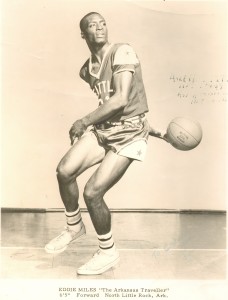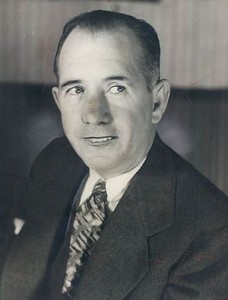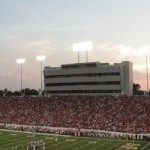Editor’s Note: Welcome to the latest This Week in Arkansas Sports History by Evin Demirel. In this column you will find tidbits of sports news from years gone by, pulled from sources and newspaper archives from around the state. Our hope is that we will remind you of a sports story you may have forgotten and share some you never knew. If you have tips for us to check out, let us know in the mailbag form at the bottom of the post. Our objective is to make this column interactive. So if you have a suggestion or feedback, send it our way. Thank you.
10 years ago …
The Pulaski Tech board of trustees postponed a vote on whether to start the state’s first junior college football team since Little Rock Junior College (now UALR) in 1955.
In 2001, an Arkansas state law was passed to allow football at Arkansas junior colleges if it is privately financed. The push to begin a program at North Little Rock’s Pulaski Tech has been spearheaded by Charles Ripley, a long-time prep basketball coach in the area who also coached the Houston Nutt-led Central High football teams of the mid-1970s.
begin a program at North Little Rock’s Pulaski Tech has been spearheaded by Charles Ripley, a long-time prep basketball coach in the area who also coached the Houston Nutt-led Central High football teams of the mid-1970s.
“It’s just been a vision of mine,” Ripley said. “It’s for the kids. It will help all the football schools in Arkansas and it will help the kids. It’s hard for them to get scholarships in out-of-state schools, so this would give them another opportunity.”
Ripley says potential boosters have assured him the team would be covered for its first three seasons, a cost Ripley estimates at between $225,000 and $250,000. Moreover, he has been promised War Memorial Stadium as a venue, support from Keith Jackson and coverage from some of the state’s largest media outlets.
In July, 2003, sports columnist Wally Hall wrote in the Arkansas Democrat-Gazette that football “will give Pulaski Tech more credibility, more visibility and more viability, and the few who would like to keep the school a secret wouldn’t want that. Let Ripley start football and the next thing you know people would be wearing T-shirts around the community and state, even the country, bearing the name and colors of Pulaski Tech.”
The vote was delayed until Sept. 15, partly to get input from more full-time students and faculty who will be on campus then. Pulaski Tech board member John Barnes said high costs are a potential roadblock: “Just running a football program alone would cost about $500,000 a year,” he said. “And that doesn’t include offices, buildings, locker rooms. We’d have to construct a field house, and that would all have to be privately funded, too.”
“The first thing we’ll have to do is find out whether or not we have the community support for that kind of funding.” [Arkansas Democrat-Gazette; July 3 & July 8, 2003]
States surrounding Arkansas have robust junior college football programs that develop student athletes and feed recruiting pipelines for larger schools, while Arkansas has only one school, Arkansas Baptist College, with a junior college football program. With the continued rise in popularity of the sport, the addition of the sport at schools such as Hendrix College and Lyon College, is it time for Arkansas’ community colleges to add football?
25 years ago …
Forrest City High School’s former tennis coach, Charles Bowlin, apologized to the black high school tennis player he told couldn’t play with her white teammates at the Forrest City Country Club.
Earle High student Teresa Whitfield said she’d gone to the country club to play a match with her school’s tennis team in April, 1988. There, she recalled being told she had to play on public courts because the club had a policy against blacks using its courts.
 Michael Easely, the club’s attorney, said Bowlin repeatedly stated former club president Charles Hammons told him discrimination against blacks was club policy. Hammons denied Bowlin’s statement, adding that when he told Bowlin to abide by club policy, he meant the students should obey the rules of the tennis courts.
Michael Easely, the club’s attorney, said Bowlin repeatedly stated former club president Charles Hammons told him discrimination against blacks was club policy. Hammons denied Bowlin’s statement, adding that when he told Bowlin to abide by club policy, he meant the students should obey the rules of the tennis courts.
Sixteen-year-old Teresa Whitfield’s attorney said a lawsuit would be filed on her behalf against Bowlin, the country club and the Forrest City School District. Around the same time, Bowlin apologized to Whitfield in a letter and vowed to help fight any future acts of discrimination. “I have known all along in my heart that the orders I was carrying out were morally wrong, and I am ashamed now that I did not protest this unfair treatment of my students even though I am certain it would have cost me my job and would have certainly caused the elimination of a tennis program in the Forrest City schools,” he wrote.
Earle’s tennis coach Jack Hosford allowed his white players to compete at the country club while Whitfield won her match at the city courts. Hosford was later relieved of his duties for going along with the decision to bar Whitfield. [Blytheville Courier-News; July 13, 1988; November 11, 1990]
50 Years Ago…
Eddie Miles, the most prolific scorer in Arkansas high school basketball history, signs a rookie contract with the Detroit Pistons. The almost-Razorback pioneer had been drafted #4 overall in April’s NBA Draft – which through 2013 remains the highest an Arkansas high school product has gone in an NBA Draft.
Pistons. The almost-Razorback pioneer had been drafted #4 overall in April’s NBA Draft – which through 2013 remains the highest an Arkansas high school product has gone in an NBA Draft.
***
Jack “Doc” Kearns, the early 20th century version of Don King, died at the age of 80. Kearns was the first manager of Jack Dempsey, heavyweight champion from 1919 to 1926, and brought the first million-dollar gate to his sport by making it possible for women to attend fights without any social stigma.
The master promoter also managed Hall of Fame champions like Joey Maxim, Archie Moore and in the early 1940s motored to Blytheville to check out that town’s native son Jimmy Lunsford, a young heavyweight fighter. As a publicity stunt, Kearns agreed to take a rare turn as referee for the fight.
 Lunsford pummeled his foe from St. Louis from the start, and Kearns stopped the fight in the second round. He’d seen enough: two weeks later, at the Claridge Hotel in Memphis, Kearns signed the 21-year-old Blytheville Bomber to a pro contract. On tour, Lunsford joined other boxers (including Blytheville middleweight Jackie Byrd) to raise money to buy ambulances for Great Britain. Lunsford knocked out 19 of his 27 foes before his career was cut short by service in World War II.
Lunsford pummeled his foe from St. Louis from the start, and Kearns stopped the fight in the second round. He’d seen enough: two weeks later, at the Claridge Hotel in Memphis, Kearns signed the 21-year-old Blytheville Bomber to a pro contract. On tour, Lunsford joined other boxers (including Blytheville middleweight Jackie Byrd) to raise money to buy ambulances for Great Britain. Lunsford knocked out 19 of his 27 foes before his career was cut short by service in World War II.
After his former manager’s death, Lunsford told sports columnist Ed Hayes he couldn’t figure out why Kearns had gravitated to boxing: “Jack was too durn smart to fool with fighters. He should’ve fooled with rasslers.” [Associated Press, July 8, 1963; Blytheville Courier-News, July 9, 1963]
100 years ago …
In today’s world, the intersection of Eighth and Bishop streets in downtown Little Rock is near the campus of Arkansas Children’s Hospital, one of the nation’s most innovative and dynamic pediatric hospitals. In 1913, this same street corner was the site of a far different innovation.
That summer, what was believed to be the South’s only electrically lit tennis court was built as a trial to see if tennis could be successfully played at night. The project was initiated at the behest of the Central City Tennis Club, which had its headquarters at 715 Bishop Street. The club’s president W.J. Tharp, also a manager of the Little Rock Railway and Electric Company, asked his company to install 24 high candle power Mazda lamps on each side of the court.
[Arkansas Gazette, July 13, 1913; 1913 Little Rock city directory]
Follow Demirel on the Twitters, which generally can be played as well at night as day. Evin recently wrote about the time Arkansan Caldwell Jones went mano-a-mano with Wilt Chamberlain in a tomahawk dunk-filed showdown.











